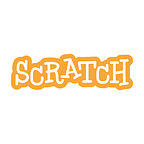Things To Try — Together!
By Saskia Leggett
This blog post is part of an ongoing series to empower and support parents, guardians, caretakers, and families in creative computing and Scratch.
Introducing Things to Try
Chances are, if your child took part in CSEdWeek’s Hour of Code activity using Scratch, they engaged with one of our featured Scratch tutorials: Make it Fly, Animate Your Name, or Make Music. These step-by-step tutorials are part of our newly launched Things to Try page (scratch.mit.edu/go), which offers a variety of project ideas that are each accompanied by a set of printable activity cards and an educator guide.
The resources on the Things to Try page are designed to connect to interests, to encourage experimentation, and to spark imagination. Although the tutorials each have a theme, they are all designed to be open-ended, allowing people to customize their creations to be more personally meaningful.
Try it out!
How might the Things to Try page apply to you? If your child is new to programming and participated in Hour of Code, they may have enjoyed the experience but might not be sure what to do next. Or perhaps your child has been creating projects with code for a while and you might not be familiar with what they do or how it works. Or maybe neither of you has explored coding before and would like to give it a try.
Whatever your story, you can use the resources on the Things to Try page as a launching pad for exploring, expressing, and experimenting with code by yourself or with your child.
As you explore the The Things to Try page, we invite you to see yourself as your child’s learning partner. Studies suggest that parent involvement can contribute to a child’s development of technological expertise. We also know that parents do not need to be computer experts to support their kids with coding. Instead, parents can take on a variety of supporting roles.
Parents can act as collaborators, sharing a learning experience by creating projects with their children. Parents can be resource providers, connecting children to activities that are aligned with their interests. Parents can be advocates for their children, seeking out learning opportunities and encouraging children as they create. Parents can even support their kids by being learners, listening and absorbing new information taught by their children.
Ways to engage
With the many roles you can play in mind, here are a few ideas for using the Things to Try page at home:
- Try out a tutorial yourself.
- Try out a tutorial with your child. Pick an activity you want to do together, then print out the corresponding activity cards and try them out.
- Read through one of the educator guides for activity inspiration, suggestions for questions you might ask to inspire your child’s work, and tips for what to do next.
- Host your own event, such as a Scratch Day, at home with your family and friends. Encourage the group to try out activities that stand out to them.
However you choose to engage with the Things to Try page together, the things you create can be as unique as your family. Code the family band of your dreams. Animate your family name to do a silly dance. Design a silly character inspired by a favorite bedtime story. Come up with a new ending to your child’s favorite movie. You could even make a flying taco.
What will you try together?
In our next blog post, we’ll highlight a few questions, prompts, and suggestions you can use to encourage creativity and exploration. Stay tuned!
Saskia Leggett is Outreach Manager for the Scratch Team.
This post was inspired by Brigid Barron, Caitlin Kennedy Martin, Lori Takeuchi, and Rachel Fithian’s study, Parents as learning partners in the development of technological fluency.
